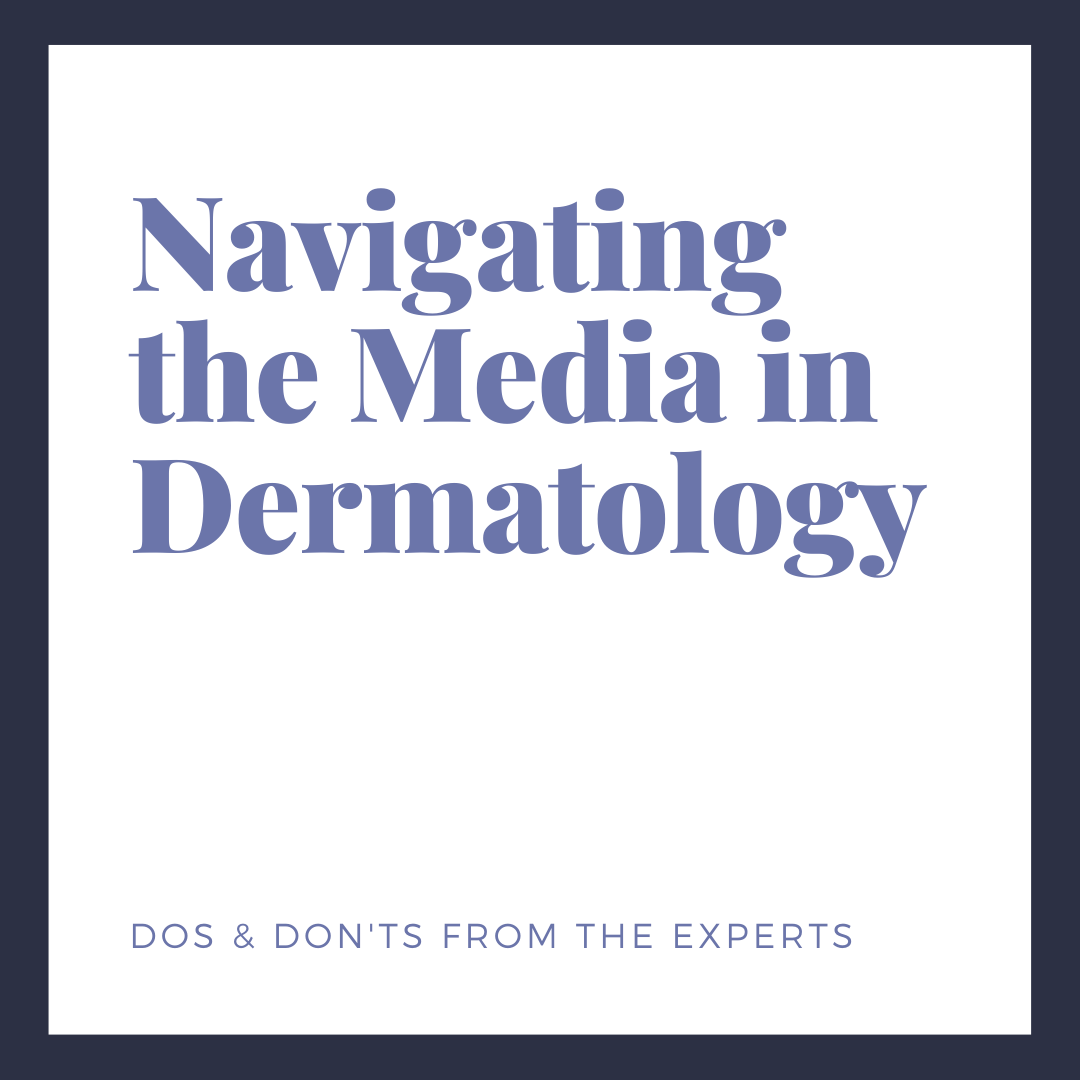Media-savvy dermatologists, reporters and editors who cover the specialty share insightful tips on navigating media relations in dermatology.
Talk to any media savvy dermatologist and you’ll hear stories of interview successes – coverage that was fair and accurate – as well as interview disappointments.
“You say something, they take a snippet and it’s put in not exactly the way you’ve put it in,” said Joel L. Cohen, MD, a Denver-based board-certified dermatologist, fellowship-trained in aesthetics, and laser and Mohs surgery. “You’re not necessarily misquoted, but certainly having the opportunity to review quotes makes sure the story flows, integrates well and is medically correct.”
Yet not every media outlet offers interviewees the opportunity to review articles before publication.
“I understand why people want to see their comments, but it generally isn’t up to me,” said dermatology freelance reporter Lisette Hilton. “Some of my clients insist on reviews for accuracy; others forbid reviews. When I cannot send the whole article to someone for an accuracy review, I say that I will send them anything that isn’t clear so they can clarify.”
Meanwhile, Heather Onorati, former dermatology magazine editor and managing editor for Pathogens and Immunity journal, said she always offers article reviews. “It is so important in medical publishing not to be first but to be accurate. The information, insight and data that we are relaying ultimately affects how a patient is cared for.”
“I don’t always ask to see a copy of an article before publication,” said dermatologist Adam Friedman, MD, “but I do offer to fact check.”
How can a dermatologist learn how to work with the media? Here are tips from media-savvy dermatologists, and reporters and editors who cover the specialty:
Ask About Review in Advance
“Ask if it’s part of the process with the publication for the experts being interviewed to review their quotes,” Hilton said.
When Offered Review, Stick to the Facts
“What I do explain is that I’m sharing for factual corrections and not to change the story,” Onorati said. “It’s simply to be sure the information is accurately relayed.”
“Don’t make changes for style, for example,” Hilton said. “Every publication has a writing style and when people make editorial changes, I often have to go back and redo things according to the publication’s requirements.”
Communicate Clearly, Especially When Not Offered Review
“Make sure you are clear in relaying your responses to the questions presented, asking if the writer understands or needs more clarification,” said Onorati.
“If interviewees don’t want something reported, they should say, ‘This is off the record,’” Hllton said.
“Pay attention to the questioning and be careful with the language that you use,” Dr. Friedman said. “It may be one line that gets included and not what you wanted to say.”
Recognize the Reporter’s Level of Understanding
“Not every journalist you speak to has a solid understanding of the medical field or the dermatology specialty or its history,” said Onorati. “In responding to questions and when referencing other sources, past studies or other experts, use full names and titles, and where necessary, maybe offer to provide a link to ensure the journalist picks up the reference correctly.”
Address Inaccuracies Immediately
“Reach out to the writer or editor immediately to explain the error and what the correct language, data point or citation should be,” Onorati said. “This way, if content is online, it’s a quick fix. If it has been printed, the writer/editor can make a plan to address the correction both short and long-term.”
Address Inaccuracies with Respect
“It’s in an interviewee’s best interest to preserve a good relationship with the publication and reporters, so shaming or having a fit right off the bat isn’t the best thing,” Hilton said. “I’ve made mistakes that weren’t caught in editing and received nice emails telling me what the mistake was and in what article. I let my editor know right away because I want accuracy. With articles being online nowadays, it’s usually easy to fix things.”
“Assume best intent and reach out directly to educate and explain,” Onorati said. “In my experience, publishing is moving so fast, and there are many early-career writers. They may not all have a full understanding of the terminology or how to report on medical studies. However, they want to get it right, they just need more explanation.”
“Journalists will get it wrong,” said Dr. Friedman. “We all are human. The best approach is to reach out and to say, ‘Thanks for covering. I would love to help correct some inaccuracies.’ Generally, if you are willing to put in the time and you are collaborative, you can fix most errors.”
Develop Relationships
“Relationships really are at the heart of reporting accuracy and guaranteeing interviewees comfort with the process,” Onorati said. “When there’s a problem, people are more understanding and receptive to discussing when the foundation for a positive relationship has been laid.”
Dr. Cohen had this word of encouragement in working with the media: “Don’t discredit the ability of someone to weave an amazing article for an issue even if it’s a popular, newsstand magazine.” He noted a consumer magazine article about the COVID vaccine and fillers that was so well-written that he uses it for patient education. “It was a very comprehensive article. Everything was covered well, and that’s helpful to people.”
Want to know how to develop strong media relationships? In an upcoming article, Drs. Adam Friedman and Joel Cohen share top-tips to become a media-savvy dermatologist.
Did you enjoy this article? Find more on Navigating Your Career here.

